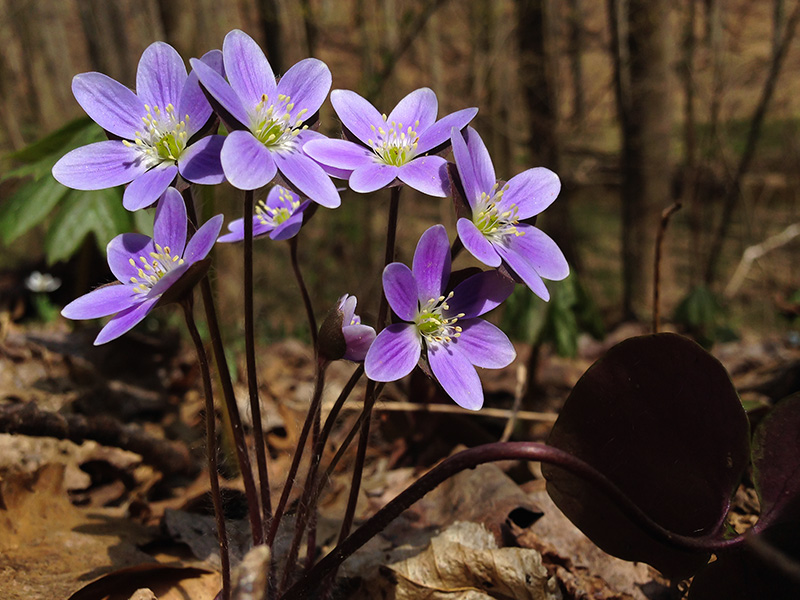
One the of earliest blooming perennials in Minnesota is the Roundlobed Hepatica (Anemone americana) which can emerge as early as April thus providing on of the first sources of food for pollinators. Always a delight when you discover a colony of Anemone on early spring woodland hikes. Must keep your eyes out for this plant since it only grows three-six inches off in the ground among the leaf matter. Happy spring hikes. Do you like them? Let us know what you think over at abbyservices.com/.
BOTANICAL NAME Anemone americana
COMMON NAME RoundLobed Hepatica
DESCRIPTION Minnesota Native. Hepatics are one of the first flowers to bloom in spring. Grows 3-6″ tall from a tuft of basal leaves that develops during the late spring and persists through the winter. Each leaf is palmately divided into 3 lobe and can have a brown-redish molted surfacce. A mature plant will produce a tuft of flowers on long naked stalks during early spring before new leaves emerge. The sepals of the flower range from white, pastel pink, or pastel blue.
FAMILY Ranunculaceae
HEIGHT 4 inches
WIDTH 4 inches
HABIT Upright
ZONES 3 to 8
EXPOSURE Part Shade
FLOWER COLOR White to Blue
BLOOM SEASON Spring
COMPANION PLANTS Later blooming plants like Dicentra, Athyrium, Pulmonaria
GROWING AND MAINTENANCE TIPS Easily grown in average well-drained soils. Grows best under deciduous trees to get protect from sun later in the season.
NOTES Woodlands, Rock Gardens, Native Gardens


